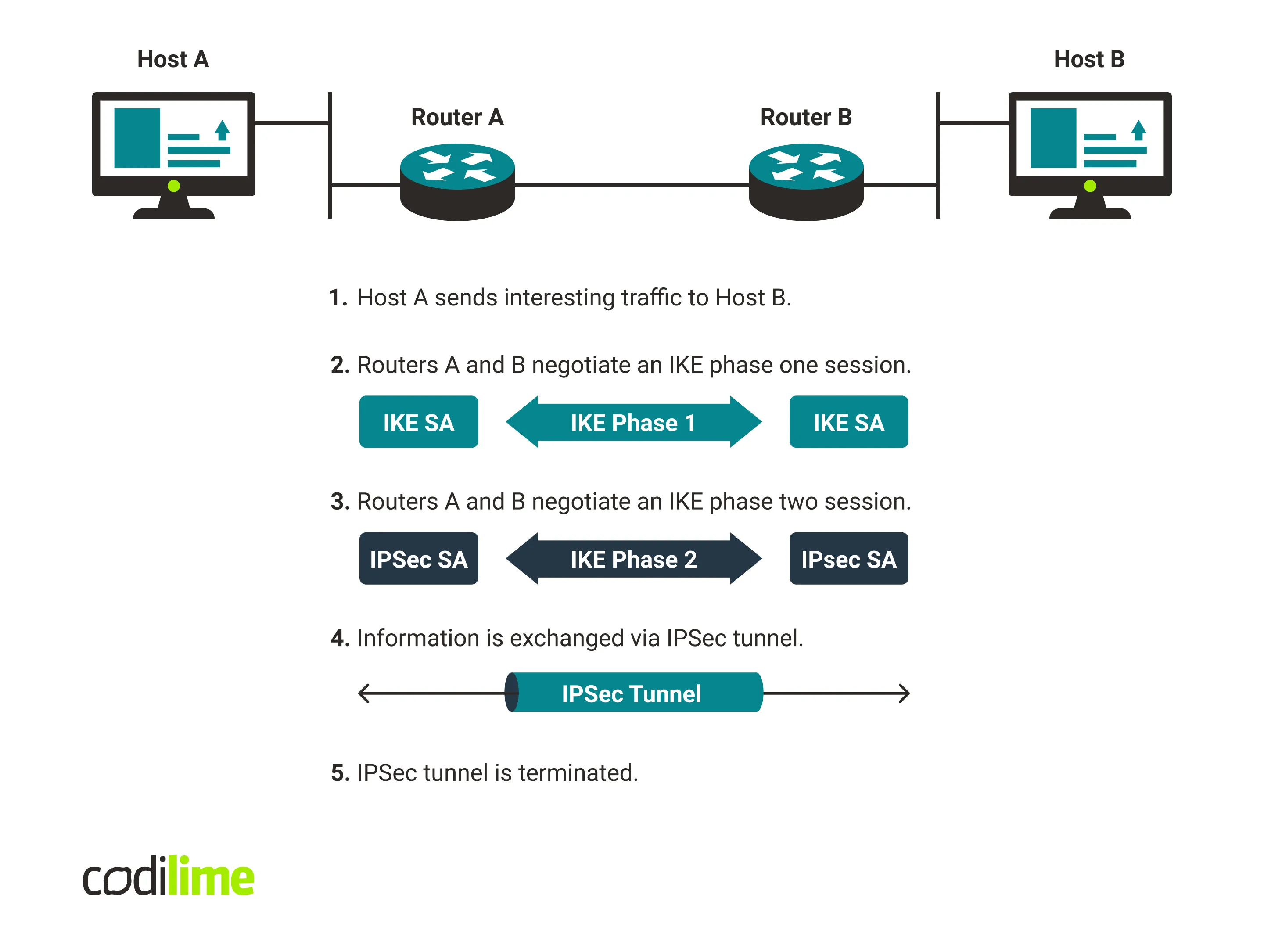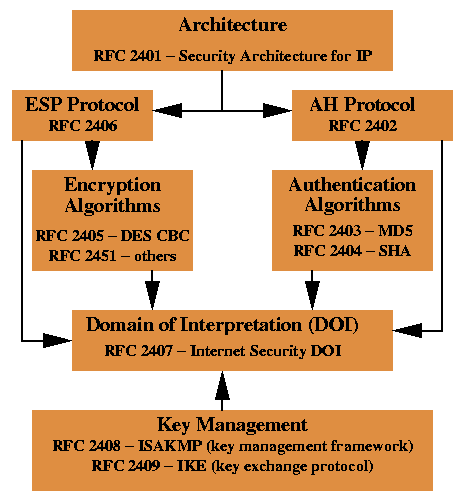Featured
Table of Contents
Difference Between Ipsec And Ssl
IPsec confirms and encrypts information packages sent out over both IPv4- and IPv6-based networks. IPsec procedure headers are found in the IP header of a package and specify how the information in a packet is handled, including its routing and shipment throughout a network. IPsec adds numerous elements to the IP header, including security details and several cryptographic algorithms.

ISAKMP is specified as part of the IKE protocol and RFC 7296. It is a framework for key facility, authentication and settlement of an SA for a safe exchange of packets at the IP layer. In other words, ISAKMP specifies the security specifications for how 2 systems, or hosts, communicate with each other.
They are as follows: The IPsec procedure begins when a host system recognizes that a packet requires protection and should be sent utilizing IPsec policies. Such packages are considered "interesting traffic" for IPsec functions, and they trigger the security policies. For outbound packages, this indicates the suitable file encryption and authentication are used.
Internet Protocol Security (Ipsec)
In the second step, the hosts use IPsec to work out the set of policies they will use for a secured circuit. They likewise verify themselves to each other and set up a safe channel between them that is used to work out the method the IPsec circuit will encrypt or confirm information sent throughout it.

A VPN essentially is a private network executed over a public network. VPNs are typically used in services to allow staff members to access their corporate network remotely.
Usually used in between protected network gateways, IPsec tunnel mode enables hosts behind one of the entrances to communicate firmly with hosts behind the other gateway. Any users of systems in a business branch office can securely link with any systems in the primary workplace if the branch workplace and main office have secure entrances to act as IPsec proxies for hosts within the respective workplaces.
What Is Ipsec? How Does Ipsec Work?
IPsec transport mode is utilized in cases where one host needs to engage with another host. The two hosts work out the IPsec circuit straight with each other, and the circuit is generally torn down after the session is complete.
With an IPsec VPN, IP packages are protected as they travel to and from the IPsec gateway at the edge of a personal network and remote hosts and networks. An SSL VPN secures traffic as it moves between remote users and an SSL entrance. IPsec VPNs support all IP-based applications, while SSL VPNs only support browser-based applications, though they can support other applications with custom-made advancement.
See what is finest for your organization and where one type works best over the other.
Ipsec Vpn Overview
Each IPsec endpoint validates the identity of the other endpoint it desires to interact with, ensuring that network traffic and information are just sent out to the intended and allowed endpoint. Despite its great energy, IPsec has a few issues worth discussing. Direct end-to-end communication (i. e., transmission technique) is not always available.
The adoption of numerous regional security policies in massive dispersed systems or inter-domain settings might present severe problems for end-to-end interaction. In this example, presume that FW1 requires to inspect traffic content to spot invasions and that a policy is set at FW1 to deny all encrypted traffic so regarding impose its content assessment requirements.
Users who use VPNs to remotely access a private organization network are put on the network itself, offering them the very same rights and operational capabilities as a user who is linking from within that network. An IPsec-based VPN might be created in a variety of ways, depending upon the needs of the user.
How Ipsec Works, It's Components And Purpose
Due to the fact that these parts may stem from numerous suppliers, interoperability is a must. IPsec VPNs allow smooth access to business network resources, and users do not always need to utilize web access (gain access to can be non-web); it is therefore a service for applications that need to automate interaction in both methods.
Its framework can support today's cryptographic algorithms in addition to more effective algorithms as they end up being offered in the future. IPsec is a necessary element of Web Protocol Version 6 (IPv6), which companies are actively deploying within their networks, and is strongly suggested for Internet Protocol Version 4 (IPv4) executions.
It supplies a transparent end-to-end safe and secure channel for upper-layer protocols, and applications do not need adjustments to those procedures or to applications. While possessing some disadvantages connected to its complexity, it is a mature protocol suite that supports a range of encryption and hashing algorithms and is extremely scalable and interoperable.
What Is Ipsec?
Like VPNs, there are numerous ways an Absolutely no Trust design can be carried out, however solutions like Twingate make the procedure significantly simpler than having to wrangle an IPsec VPN. Contact Twingate today to read more.

IPsec isn't the most common web security procedure you'll use today, however it still has an essential function to play in protecting internet communications. If you're utilizing IPsec today, it's probably in the context of a virtual private network, or VPN. As its name implies, a VPN creates a network connection in between 2 devices over the public internet that's as safe and secure (or almost as protected) as a connection within a personal internal network: most likely a VPN's many well-known use case is to permit remote workers to gain access to protected files behind a business firewall program as if they were working in the office.
For the majority of this post, when we say VPN, we imply an IPsec VPN, and over the next a number of sections, we'll explain how they work. A note on: If you're looking to set up your firewall software to permit an IPsec VPN connection, make certain to open UDP port 500 and IP ports 50 and 51.
Ipsec Overview

When this has all been set, the transport layer hands off the data to the network layer, which is mainly managed by code working on the routers and other elements that make up a network. These routers choose on the route specific network packets require to their location, but the transportation layer code at either end of the interaction chain does not need to know those information.
On its own, IP doesn't have any built-in security, which, as we kept in mind, is why IPsec was established. Today, TLS is built into virtually all browsers and other internet-connected applications, and is more than sufficient protection for everyday internet usage.
That's why an IPsec VPN can include another layer of security: it involves protecting the packets themselves. An IPsec VPN connection begins with facility of a Security Association (SA) in between two interacting computer systems, or hosts. In basic, this includes the exchange of cryptographic keys that will allow the parties to secure and decrypt their interaction.
Latest Posts
The Best Vpn For Business In 2023: Top 8 Corporate ...
8 Best Vpns For Business To Safeguard Your Network And ...
10 Best Vpn Services Of 2023: How They Stack Up